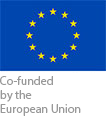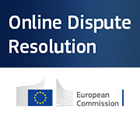Phishing, smishing and spoofing
Scammers will try to reach you in countless ways. They might try to contact you via email and text message, using a false identity to gain your trust.
What do these fraudulent emails and text messages often have in common? They will ask you to check your details via a link. If you then share your financial details such as your bank account, you risk the scammer emptying your account.
Watch out for dangerous email attachments too. These can install a virus or spyware on your device, which may cause the device to stop working or share information about you with the scammer.
To better protect you against these scams, we explain:
- what phishing is;
- what smishing is;
- what spoofing is;
- and how to avoid being ripped off in this way.
What is phishing?
Phishing is an internet scam also known as email fraud. The scammer abuses your trust and sends you emails in the name of another, often well-known organisation. These fake emails use the organisation’s name, logo and branding. The identities of banks, courier services and government agencies in particular are often used for this purpose.
What is smishing?
Smishing is similar to phishing, but instead of an email, the scammer sends you a text or WhatsApp message. Again, they try to gain your trust by abusing the name of a well-known organisation.
What is spoofing?
Spoofing is the collective term for scams in which fraudsters email (phishing), text (smishing) and call you in the guise of another organisation. Even during phone calls, scammers can pretend to be a trusted institution. The name of ECC Belgium, the European Consumer Centre Belgium, has been abused in this way several times. The caller claimed that the contacts were entitled to a refund and requested their bank details, including PINs.
Avoid falling into the trap
Internet fraudsters are becoming increasingly creative and professional. So pay attention if you receive a suspicious email, text message or phone call.
- Check the sender’s email address. This often contains the name of the organisation being faked, but it won’t quite match the official email addresses.
- Never open any links or attachments that look suspicious.
- A bank will never ask you to check your details via email or text.
- If you’re in doubt about the authenticity of an email or text message, contact the organisation that claims to be the sender. But don’t do this via the contact details given in the email or text! Find the correct details on the official website of the supposed sender.
- Report suspicious emails or texts to [email protected].
- Delete suspicious emails and text messages. Never forward them to your contacts.
Has our advice come too late? Have you already shared your personal information? Or would you like to read more about these scams? At Safe on Web, an initiative of the Belgian government’s Centre for Cyber Security, you’ll find even more information and learn how to react if you are a victim of internet fraud.


